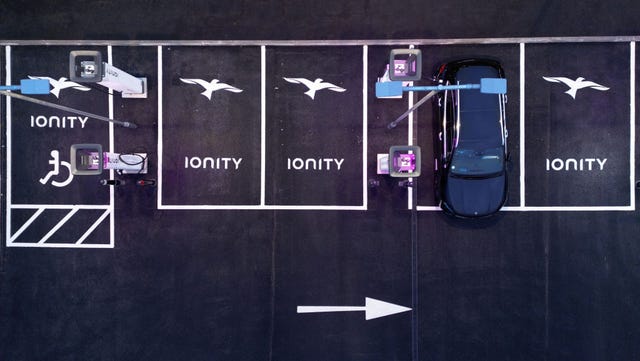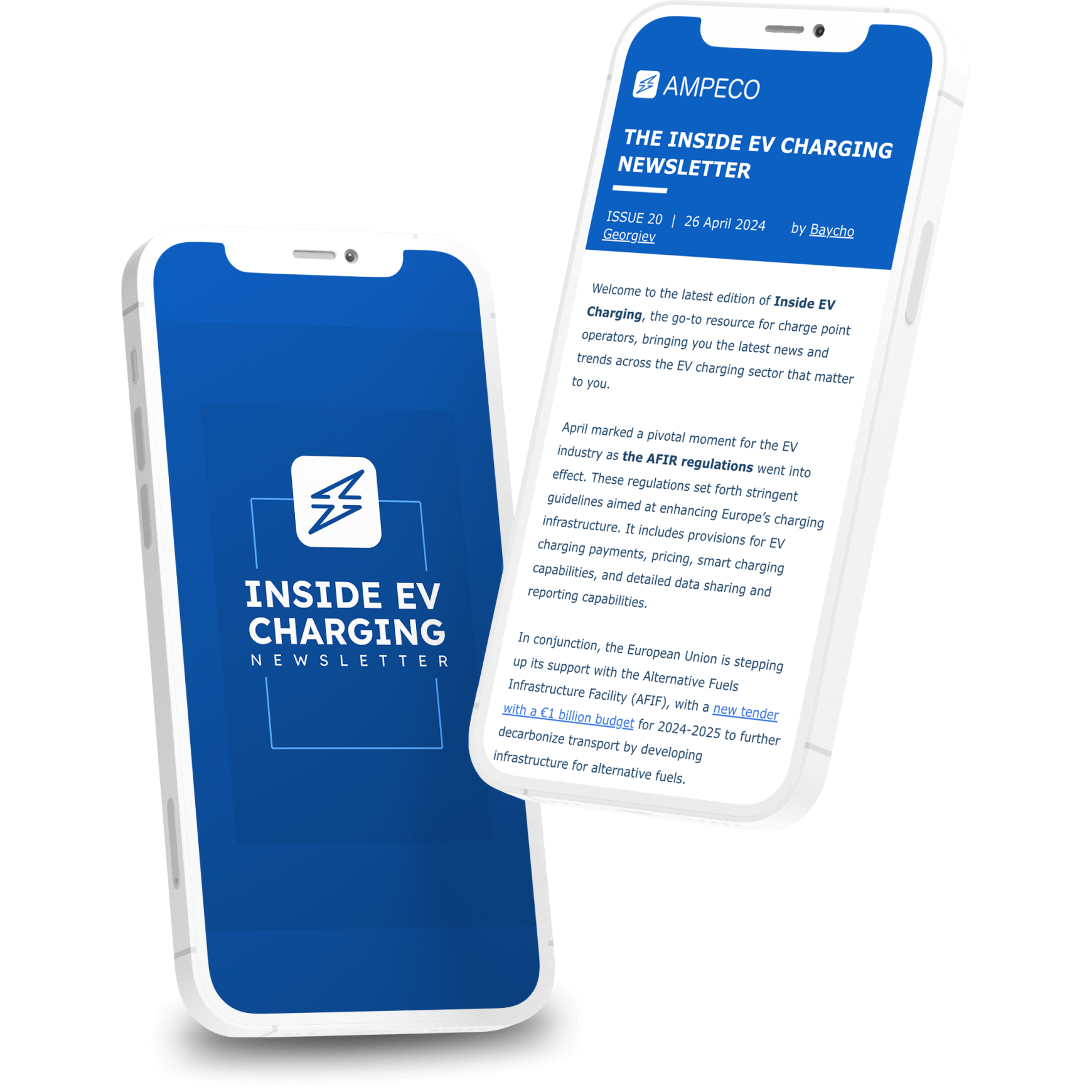The Future of Electric Vehicles and Why You Should Buy EV Charging news Now
The Future of Electric Vehicles and Why You Should Buy EV Charging news Now
Blog Article
Leading EV Charging News: Key Updates on Infrastructure and Technology

Recent Developments in Fast-Charging Innovation

Moreover, improvements in battery technology, including boosted thermal administration systems and greater power density batteries, complement fast-charging capacities. These developments alleviate the risk of battery deterioration throughout rapid charging, making sure long life and efficiency for EV owners.
Furthermore, the integration of wise billing solutions is improving customer experience, enabling real-time tracking and dynamic pricing designs. EV Charging news. This versatility permits drivers to optimize charging times and costs based on grid need
As car manufacturers remain to buy fast-charging networks, the collaboration between sector stakeholders is essential. Partnerships between billing station providers and automotive producers are leading the means for comprehensive coverage, inevitably cultivating a much more robust EV ecosystem. These improvements are crucial in sustaining the change to lasting transportation.
Government Efforts for Billing Growth
Government initiatives play a crucial role in the development of electrical lorry (EV) billing facilities, assisting in the shift to sustainable transport. Numerous government and state programs are being carried out to improve charging accessibility, lower the economic problem on consumers, and advertise the fostering of electric vehicles.
Especially, the U.S. government has actually allocated substantial financing through the Framework Financial Investment and Jobs Act, which earmarks $7.5 billion for EV billing network advancement throughout the nation. This financing is intended at deploying hundreds of new charging terminals, particularly in underserved areas, therefore attending to range anxiousness among possible EV purchasers.
Furthermore, various states are establishing regulations to streamline the allowing procedure for charging terminal installments, which is critical for speeding up release. Rewards such as tax obligation credits and refunds for both customers and organizations are likewise being presented to encourage the setup of billing infrastructure.
In addition, public-private partnerships are progressively becoming an emphasis, leveraging exclusive investment to match federal government funding. These efforts emphasize a collective method vital for constructing a extensive and efficient EV billing network, eventually adding to a greener and more sustainable future.
Innovative Battery Solutions Enhancing Effectiveness
Changing the landscape of electrical car (EV) modern technology, innovative battery services are dramatically enhancing efficiency and performance. Developments in battery chemistry, especially with lithium-sulfur and solid-state batteries, are bring about increased energy density, which allows for longer varieties and faster charging times. These new battery types have the prospective to exceed traditional lithium-ion batteries by offering higher capacities while decreasing weight, thus improving overall automobile performance.
In addition, growths in battery monitoring systems (BMS) are maximizing power use and prolonging battery lifespan. Intelligent algorithms monitor look at this website battery wellness and efficiency, allowing real-time modifications to charging and discharging processes. This not only enhances the efficiency of the battery yet likewise makes sure a much more lasting and trustworthy energy source for EVs.
In addition, the combination of recycling technologies is attending to the environmental impact of battery manufacturing and disposal. Advancements in second-life applications for EV batteries are facilitating their usage in energy storage systems, adding to a round economic climate.
As these innovative battery remedies continue to evolve, they assure to transform the EV market, making electric lorries a lot more attractive and accessible to a more comprehensive audience while sustaining global sustainability goals.

Partnership Between Automakers and Charging Networks
Recognizing the crucial requirement for a robust charging facilities, automakers are increasingly collaborating with charging network service providers to improve the EV ownership experience (EV Charging news). These collaborations aim to produce a seamless charging ecological community that profits consumers and sustains the change to electric automobiles
Major automotive brand names are signing up with forces with well-known billing networks to expand their billing station coverage, making sure drivers have accessibility to convenient and reputable charging options. For example, collaborations with networks like ChargePoint and Electrify America enable automakers to integrate billing services straight into their cars' navigating systems, assisting users to the nearby stations and providing real-time accessibility updates.
Furthermore, these partnerships usually cause the advancement of fast-charging innovations that dramatically lower the moment needed to charge an EV. By merging resources and know-how, car manufacturers and charging networks can introduce quicker, developing options that fulfill the expanding need for electrical wheelchair.
Additionally, joint initiatives might likewise lead to even more standardized charging protocols, which can reduce consumer complication and promote more comprehensive EV adoption. On the whole, these calculated partnerships are essential in developing a user-friendly and efficient charging facilities that satisfies the needs of an expanding electric automobile market.
Challenges Encountering EV Billing Facilities
As the electric automobile market continues to expand, numerous difficulties are emerging that prevent the growth of an extensive billing facilities. One of the main obstacles is the insufficient variety of charging stations, especially in rural and underserved metropolitan locations. This space produces array anxiousness amongst possible EV customers, deterring them from making the button.
Furthermore, the absence of standardization accountable technology complicates the facilities landscape. Variants in plug kinds and billing speeds can create complication for customers and enhance operational complexities for charging network operators. Additionally, the assimilation of billing terminals right into existing electric grids postures considerable difficulties. Several areas deal with capability restrictions, calling for substantial investments in grid upgrades to suit enhanced need.
An additional pushing concern is you could check here the high expense connected with the setup and maintenance of billing stations, which can be an obstacle for both public entities and private companies. Governing obstacles and zoning constraints can delay the deployment of billing facilities, impeding development in increasing vital services. Addressing these obstacles will certainly be vital for fostering a robust EV environment that sustains the transition to lasting transport.
Conclusion
To conclude, the recurring innovations in EV charging technology, supported by significant federal government campaigns and ingenious battery options, are important for the expansion and efficiency of go to these guys electric automobile facilities. Partnerships in between car manufacturers and billing suppliers even more enhance station insurance coverage, attending to the growing demand for available charging choices. Despite obstacles that persist within the EV charging landscape, these growths indicate a favorable trajectory in the direction of a more sustainable and reliable electrical automobile ecological community.
Developments in charging infrastructure have led to the advancement of ultra-fast battery chargers capable of delivering up to 350 kW of power, significantly minimizing charging times. Variants in plug types and billing rates can create complication for individuals and enhance operational complexities for charging network operators.In verdict, the continuous improvements in EV billing modern technology, sustained by substantial federal government efforts and cutting-edge battery options, are critical for the expansion and efficiency of electric lorry infrastructure. Collaborations between car manufacturers and charging providers better boost terminal protection, dealing with the growing need for accessible charging alternatives. In spite of challenges that linger within the EV charging landscape, these growths indicate a favorable trajectory in the direction of a more lasting and reliable electrical car community.
Report this page